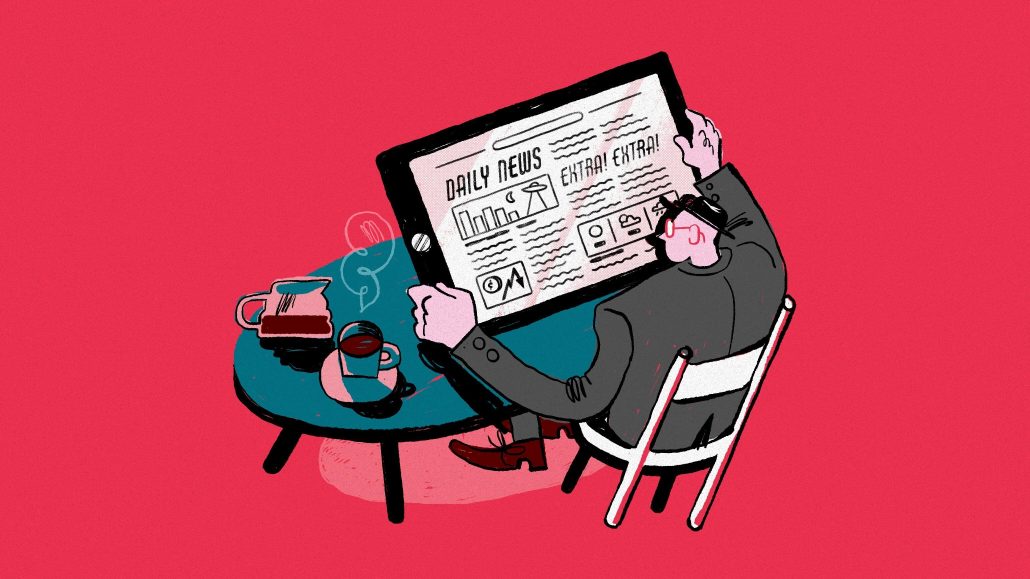Save 50% on a 3-month Digiday+ membership. Ends Dec 5.

The Washington Post began offering a subscription bundle this week with the meditation app Headspace. It’s an effort by the Post to market its recently expanded wellness coverage to those that aren’t frequent Post readers, and to increase its subscriber base by targeting those interested in verticals beyond its core politics and news stories, said Michael Ribero, chief subscriptions officer at The Washington Post.
The Post is “thinking about different on-ramps. For so long, we’ve essentially had one on-ramp – one price, one dimension of coverage being politics or opinion,” Ribero said. “We want to have more of these on-ramps for people to come on. We think non-hard news is a great one of those.”
The bundle will be offered to new subscribers, who have the option to pay $70 for an annual digital subscription to The Washington Post and a 12-month subscription to Headspace — an over 60% discount. New subscribers can also choose a month-to-month Washington Post subscription for $4 every four weeks for the first year and get a 30-day free trial to Headspace. The subscriptions will renew independently, at the regular price of $120 for an annual Washington Post subscription and $69.99 a year for a Headspace subscription.
The Washington Post declined to answer questions about terms of the deal between the Post and Headspace. The two companies will not share subscriber data. A person will need to sign up separately to create an account on Headspace once they subscribe through the Post. The Post will market the bundle on its paywall pop-up, through paid media and in emails from both the Post and Headspace, Ribero said.
Bundle subscribers will get access to videos featuring Washington Post reporter Amanda Morris in Headspace’s daily show, “The Wake Up.” Post columnist Gretchen Reynolds will join Headspace’s daily mindfulness podcast, “Radio Headspace,” as a guest host for five episodes. Subscribers can also meditate through exercises on The Washington Post’s Well+Being section.
The tactic is no doubt mirrored after the success other publishers — such as The New York Times — have had in growing their subscriber base by offering subscriptions to non-news content, said Arvid Tchivzhel, svp of product at Mather Economics, a subscription management and customer data analytics firm that works with publishers. This comes as the Post is reportedly struggling to grow its subscription business — it has 3 million subscribers, the same number as in 2021.
“I’m sure [The Post has] done some forecasting around what that market [opportunity] is. But I expect certainly a bump in subscriptions for The Post based on that,” Tchivzhel said. Though the churn rate of a bundle subscriber will likely be “slightly higher” compared to a “native Post” subscriber, the offering will “still probably be a profitable outcome,” he added.
The Post’s strategy is to get a reader to subscribe through the bundle offering with Headspace and then pull that reader in to consume content from other non-hard news sections and come across the Post’s daily news coverage as well, Ribero said. The Post’s “best customers” — subscribers that have higher retention and engagement rates — are ones that are reading across different verticals, Ribero noted. He said the Post is seeing “upticks” in the frequency and diversity of non-hard news content subscribers are consuming, but did not provide stats to support this.
The “stickiness” of bundle subscribers — or whether they will renew their subscriptions once the promotional period ends — remains to be seen. Michael Silberman, evp of strategy and social at paywall tech company Piano, said they have a few clients testing bundles but the data to support conclusive findings is currently limited. [Editor’s note: Piano is a contracted vendor with Digiday.]
The strategy at the Post is to get consumers through the door with this bundle offering and use the next year to convince the subscriber why it’s worth renewing at a full price, Ribero said.
“We’ve learned a lot through our data that there are actions that our new customers take in order to increase the probability that they’ll remain a customer after a promotional period,” he said, such as getting new subscribers to go through the Post’s onboarding process, return to the site often and read from a variety of sections and devices. “We have a year in order to build these habits with customers,” Ribero said.
More in Media

How AI’s hit to publisher traffic is quietly rewiring media M&A
Publishers’ AI-driven traffic declines are cooling M&A, stalling deals and lowering valuations. Some analysts are optimistic about 2026.

Digiday+ Research: Where publisher revenue stands with ads, video, content licensing and subscriptions
Digiday+ Research conducted a survey among nearly 40 publisher professionals in Q3. Here is what they had to say about their different revenue sources.

AI-powered professional learning and the battle vs. ‘workslop’: Inside Deloitte’s Scout
Deloitte last month launched Scout as part of its Project 120, the company’s $1.4 billion investment in professional development.








